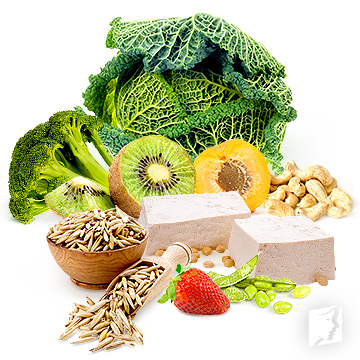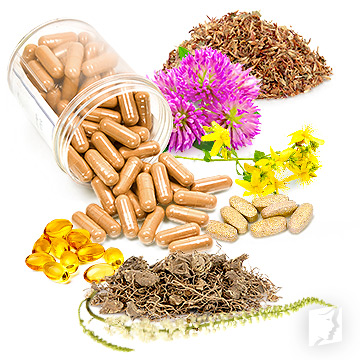When women start experiencing symptoms of an estrogen imbalance, one of the first steps they may take is to revise what they currently have in their cupboards and fridges that could bring them wholesome relief. After all, food is medicine, and there are more foods that increase estrogen than one might think.
Continue reading to learn more about estrogen-boosting foods as well as other methods to increase estrogen levels in order to finally indulge in a symptom-free life.
Foods that Increase Estrogen

Because they are a natural alternative to estrogen replacement therapy options, many women wish to consume estrogen-enhancing foods first in efforts to promote hormonal balance.
Wholesome and natural foods that increase estrogen levels in females contain large amounts of phytoestrogens, or plant-based estrogens. Phytoestrogens encourage endocrine system health by binding to estrogen receptors in the body and acting as a week estrogen or anti-estrogen.
Two of the most studied groups of phytoestrogens in foods are lignans or isoflavones, both of which belong to the family of polyphenols.
The following are examples of estrogen-boosting foods that contain these two groups:
Soy
Soy is one of the most widely acclaimed phytoestrogenic foods due to its isoflavone content. Soy can be eaten in a variety of forms, including tofu, soybeans, and edamame as well as soy milk or soy protein powder.
Nuts and seeds
Nuts and seeds are high in lignans, which are the principal source of dietary phytoestrogens in a typical Western diet. Wholesome options are flaxseeds, sesame seeds, cashews, hazelnuts, and walnuts.
Grains
Grains like barley, buckwheat, millet, oats, rye, and wheat are also fairly high in levels of lignans. Consume them as your portion of complex carbs as part of your menopause diet.
Vegetables
While not as high in lignans as seeds, vegetables can also be incorporated into a healthy diet to increase estrogen. Noteworthy options include broccoli, cabbage, Brussels sprouts, asparagus, and kale.
Fruits
Similar to vegetables, whole, unprocessed fruits can also be appreciated for their lignan content. Notable options include apricots, strawberries, cranberries, and kiwis.
Other Methods to Increase Estrogen

While consuming foods to increase estrogen levels is one way women can treat menopause symptoms, the best results are found when alternative medicine is instilled into one's treatment plan.
Alternative medicine traditionally used to promote hormonal balance includes phytoestrogenic herbal supplements or hormone-regulating supplements.
Phytoestrogenic herbal supplements
Phytoestrogenic herbal supplements contain stronger concentrations of phytoestrogens than estrogen-boosting foods alone, causing a more impactful, hormonal effect in a woman's body.
However, because they contain outside hormones, they are only safe for short-term use under the close supervision of a certified herbalist. Classic examples of widely used phytoestrogenic supplements include black cohosh, red clover, St. John's wort, and dong quai.
Hormone-regulating supplements
Likewise, hormone-regulating supplements, like Macafem, work with the body to encourage natural hormone production from the endocrine glands, thus safely allaying symptoms of an estrogen imbalance. Since they do not contain hormones, they are safer for long-term use to promote overall hormonal health.
Key Takeaways
Women who seek out foods that boost estrogen levels have a wide variety of options to choose from, ranging from soy, nuts, and seeds to grains, fruits, and vegetables. While a hormonally friendly diet may be a necessary step on the path to endocrine system balance, other methods to increase estrogen directly should also be considered, principally the use of phytoestrogenic herbal supplements or hormone-regulating supplements. Do your research. Craft a plan that works for you, and sooner than you know it, your due diligence will pay off to reward you with a symptom-free lifestyle.
Sources
- Harvard T.H. Chan. (n.d.). Straight Talk About Soy. Retrieved June 19, 2019, from https://www.hsph.harvard.edu/nutritionsource/soy/
- Kuhnle, G.G. et al. (2008). Phytoestrogen content of beverages, nuts, seeds, and oils. Journal of Agricultural and Food Chemistry, 56(16), 7311-7315. doi: 10.1021/jf801534g
- Oregon State University. (2010). Lignans. Retrieved June 19, 2019, from https://lpi.oregonstate.edu/mic/dietary-factors/phytochemicals/lignans
- Peterson, J. et al. (2010). Dietary lignans: physiology and potential for cardiovascular disease risk reduction. Nutrition Reviews, 68(10), 571-603. doi: 10.1111/j.1753-4887.2010.00319.x

